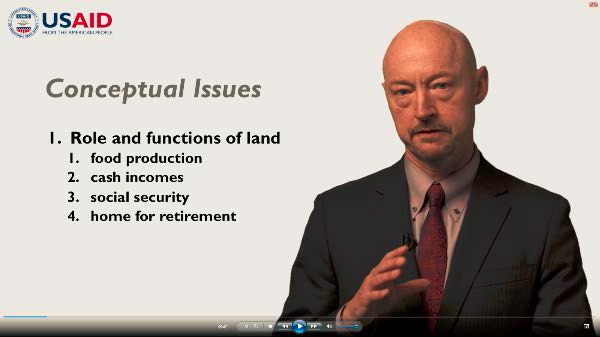
How do you most effectively build capacity within USAID and the broader global development community to better understand and address one of today’s most important and complex issues? How do you efficiently deliver a state of the art training to a diverse audience of practitioners, researchers and government officials spread around the globe? How do you facilitate dialogues and build connections so that participants can learn from each other and from experts in the field?
Those questions drove USAID’s Land Tenure and Resource Management Office to create an innovative training program: a Massive Open Online Course (MOOC) on Land Tenure and Property Rights. The first iteration of this course, which ran from September 14, 2015 – January 1, 2016, on the Canvas platform, was one of USAID’s first-ever MOOCs. It brought together 1,969 participants from over 60 countries to examine and discuss land tenure and property rights issues and best practices.
Through 14 modules and three country case studies, the course presented theories, evidence and best practices related to property rights in real-world settings. Each module featured reading assignments and video lectures from leading researchers and practitioners – including experts from USAID, Yale University, Michigan State University, the International Organization for Migration, and others. Importantly, the course also featured interactive discussion forums and periodic live Google Hangouts, allowing participants to ask and answer questions, share insights and experiences, and engage in peer-to-peer learning.
USAID developed the MOOC because when it comes to understanding the myriad complex challenges created by insecure land rights–and the evidenced-based global best practices for addressing them–there has not been a shared education tool to guide development practitioners at the programmatic level until now.
With the first iteration now completed, participant surveys, quiz results, and statistics on user participation and retention are being analyzed to help improve future versions of the course. Based on this analysis, the MOOC will be tweaked and version 2.0 will be released later in 2016.

